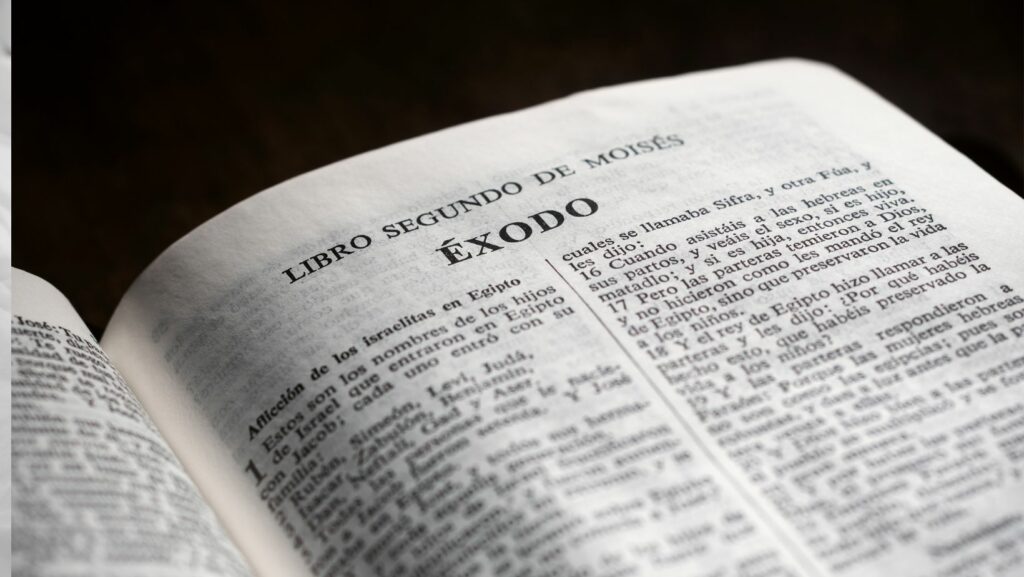Book Genres in Spanish
- Diverse Literary Genres: Spanish literature includes a variety of genres such as fiction, non-fiction, poetry, and drama, each offering unique themes and storytelling techniques.
- Fictional Depth: Novels and short stories serve as significant fictional genres, with novels exploring complex issues and short stories focusing on brief, impactful narratives.
- Cultural Insights in Non-Fiction: Non-fiction genres like essays and biographies provide valuable insights into real-life experiences and philosophical reflections, enhancing cultural understanding.
- Poetry as Expression: Lyrical and narrative poetry in Spanish literature express emotions and tell compelling stories, highlighting the richness of the language.
- Dramatic Exploration: Drama genres, including tragedy and comedy, explore serious themes and societal issues, showcasing the diverse human experience through theatrical works.
- Unlocking Cultural Nuances: Understanding these genres deepens readers’ appreciation for the cultural contexts and literary traditions embedded within Spanish literature.
 Exploring the world of literature in Spanish opens up a vibrant tapestry of genres that captivates readers across the globe. From the haunting beauty of magical realism to the gripping tension of thrillers, Spanish literature offers something for every taste. Understanding these genres not only enriches one’s reading experience but also deepens appreciation for the cultural nuances embedded in each narrative.
Exploring the world of literature in Spanish opens up a vibrant tapestry of genres that captivates readers across the globe. From the haunting beauty of magical realism to the gripping tension of thrillers, Spanish literature offers something for every taste. Understanding these genres not only enriches one’s reading experience but also deepens appreciation for the cultural nuances embedded in each narrative.
As readers delve into the rich variety of Spanish book genres, they discover how language and storytelling intertwine. Each genre reflects unique themes and traditions, showcasing the diversity of the Spanish-speaking world. Whether one is a seasoned bibliophile or a curious newcomer, navigating these genres can unlock new worlds and perspectives that resonate far beyond the pages.
Overview of Book Genres in Spanish
Spanish literature encompasses various genres, each presenting unique themes and storytelling techniques. Understanding these genres aids in appreciating cultural nuances and literary traditions.
Fiction Genres
- Novela: A long prose narrative featuring complex characters and intricate plots, often exploring social issues.
- Cuento: Short stories that capture a single moment or aspect of life, known for their brevity and focus on themes.
Non-Fiction Genres
- Ensayo: Analytical essays that delve into philosophical, political, or cultural topics, reflecting the author’s perspective and critique.
- Biografía: Biography narratives that detail the lives of significant figures, offering insights into their contributions and historical contexts.
Poetry Genres
- Poesía Lírica: Expressive poetry that conveys emotions and personal experiences, often utilizing meter and rhyme.
- Poesía Narrativa: Narrative poetry interweaving storytelling with poetic elements, crafting vivid imagery and emotional depth.
Drama Genres
- Tragedia: Dramatic plays that focus on serious themes, often involving moral dilemmas and the consequences of human actions.
- Comedia: Light-hearted plays that entertain through humor, social commentary, and relatable characters.
- Cuentos Infantiles: Children’s stories that capture imagination with moral lessons, folk tales, or whimsical adventures.
Each genre contributes to a rich tapestry of Spanish literature, inviting readers to engage with diverse voices and cultural perspectives.
Fiction Genres
Fiction genres encompass various forms that engage readers with imaginative narratives. Key distinctions within fiction include novels and short stories, each offering unique storytelling experiences.
Novels
Novels are extended narratives that delve into complex storylines, character development, and thematic exploration. Subgenres include:
- Historical Novels: Set against specific historical backdrops, these novels provide insights into cultural events and societal dynamics.
- Fantasy Novels: They create immersive worlds filled with magical elements and fantastical creatures, allowing readers to escape reality.
- Science Fiction Novels: These narratives explore futuristic concepts, technological advancements, and the impact of science on societies.
- Romance Novels: Focused on romantic relationships, these novels often include emotional arcs and character growth.
- Mystery Novels: They engage readers with puzzles, crime-solving, and suspenseful plots, often leading to unforeseen twists.
Spanish-language novels, such as “Cien años de soledad” by Gabriel García Márquez, illustrate the genre’s ability to weave intricate tales that reflect cultural identities and societal issues.
Short Stories
Short stories are concise narratives that convey a complete tale within a limited word count. They emphasize brevity and impact. Key attributes include:
- Characterization: Short stories often focus on one or two central characters, developing their complexities quickly.
- Themes: They frequently tackle poignant themes such as love, loss, identity, and human experience.
- Structure: Many utilize a straightforward narrative arc, often culminating in a twist or poignant revelation.
Authors like Julio Cortázar and Borges exemplify the power of short stories in Spanish literature, showcasing how concise narratives can evoke deep emotions and provoke thoughtful reflections.
Non-Fiction Genres
Non-fiction genres in Spanish literature encompass a variety of forms that provide insight into real-life experiences, ideas, and reflections. These genres foster understanding and appreciation of historical, cultural, and personal narratives.
Biographies
Biographies narrate the lives of individuals, offering a glimpse into their personal journeys, challenges, and achievements. Notable biographies include “La biografía de un hombre en tiempos de guerra” by Manuel Rivas, which chronicles the life of a war hero. These works typically blend storytelling with historical context, allowing readers to comprehend the influence of significant figures in society. They highlight the impact of culture, politics, and social issues on individual lives, resulting in a deeper understanding of the human experience.
Essays
Essays provide critical analysis and reflection on a wide range of topics, including philosophy, politics, society, and culture. Prominent essays include “El laberinto de la soledad” by Octavio Paz, which examines identity and loneliness in Mexican culture. These pieces often combine personal anecdotes with academic research, creating a dialogue that encourages thoughtful engagement. They stimulate intellectual discourse, challenge readers’ perspectives, and enhance cultural awareness, making essays a vital component of Spanish literature.
Poetry and Drama
Poetry and drama hold significant places in Spanish literature, serving as vital expressions of emotion, culture, and societal themes. Both genres encompass a rich variety of forms that enhance literary appreciation.
Types of Poetry
Spanish poetry showcases several distinct types, each offering a unique style and thematic depth. Key forms include:
- Lyrical Poetry: This form expresses personal emotions and feelings. Poets like Pablo Neruda and Federico García Lorca emphasize passion and introspection with their works.
- Narrative Poetry: This type tells stories through verse, often blending lyrical elements. Notable examples include “La canción del pirata” by José de Espronceda.
- Sonnet: A structured form consisting of 14 lines, often exploring themes of love and nature. Famous sonnet writers include Garcilaso de la Vega and Luis de Góngora.
- Haiku: A concise form capturing moments in nature, derived from traditional Japanese poetry but adapted in Spanish literature.
- Ode: This celebratory form praises a person, object, or event, written by poets like Vicente Aleixandre and José Manuel Caballero Bonald.
Theatrical Works
Theatrical works in Spanish literature encompass various dramatic forms, highlighting cultural narratives and human experiences. Important types include:
- Tragedy: This genre deals with serious themes, often involving moral dilemmas and tragic outcomes. Notable tragedies include “La vida es sueño” by Pedro Calderón de la Barca.
- Comedy: Comedic works focus on humor and satire, exploring societal issues. “El perro del hortelano” by Lope de Vega exemplifies this genre.

- One-Act Plays: These concise dramas capture essential moments and themes, allowing deeper exploration of character motivations.
- Musical Theatre: This combines drama with music, reflecting cultural traditions, as seen in zarzuela, a Spanish operatic form.
Both poetry and drama contribute to the richness of Spanish literature, reflecting the diverse experiences and cultural contexts within the Spanish-speaking world.
Traditions and Themes That Characterize the Spanish-Speaking World
Exploring the various genres of Spanish literature reveals a vibrant tapestry of cultural narratives and emotional depth. Each genre offers a unique lens through which readers can engage with the rich traditions and themes that characterize the Spanish-speaking world. From the intricate storytelling of novels to the poignant expressions found in poetry, these genres not only entertain but also educate and inspire.
As readers delve into these diverse forms, they gain a deeper appreciation for the cultural nuances that shape the literature. Embracing the beauty of Spanish literature opens doors to new perspectives and fosters a greater understanding of the human experience across different cultures.



